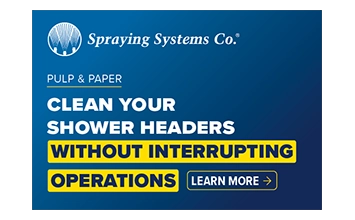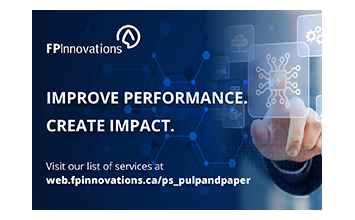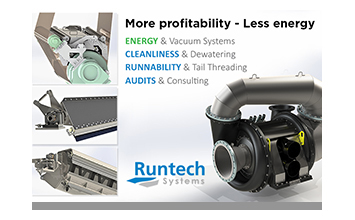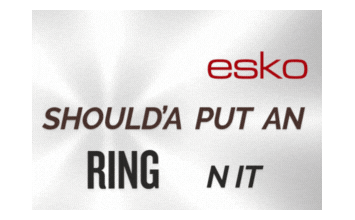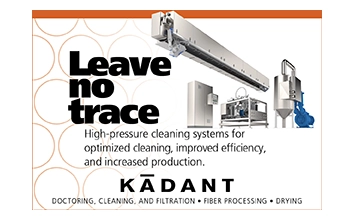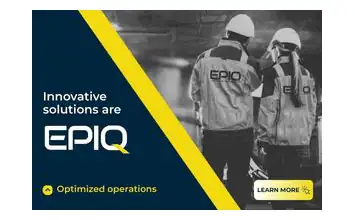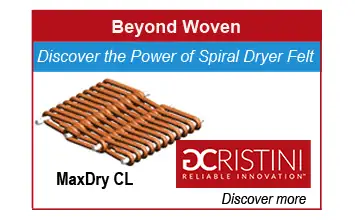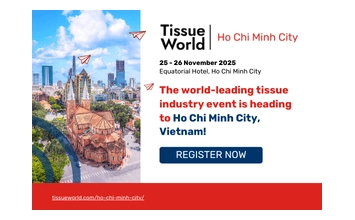Before the 1970s, the pulp and paper industry was a major consumer of fresh water and generator of waste water.
Mills were generally located near major waterways in order to have access to fresh water. Effluents were often discharged with minimal treatment, causing significant environmental damage. As environmental awareness developed in the 1970s and 1980s, governments began introducing stricter wastewater discharge regulations and producers looked at ways to reduce their water usage, since this would lower the capital cost of building effluent treatment systems. By the 1990s, biological treatment and clarification of waste water to minimize the release of organic material and suspended solids, respectively, into waterways became standard.
There have been many efforts over the years to reduce the amount of water discharged from the kraft pulping process. Limited water reuse has been implemented, along with improved spill management and treatment of effluent streams with ultrafiltration, reverse osmosis and activated carbon. The Rapson-Reeve process, developed at the University of Toronto, based upon recycling bleach plant filtrate to the pulp mill to eliminate discharge from the bleach plant, was tried out at the Great Lakes kraft pulp mill in Thunder Bay. The organics in the filtrates were burned in the recovery furnace, and sodium chloride introduced into the process was removed through a salt recovery process. A number of operating problems were encountered at start-up, including corrosion, pH control, pitch, scale and unstable operation of the recovery boiler and lime kiln. Ultimately, the mill was never able to achieve total recycle of the bleach plant effluent, and the process was abandoned in 1988.
The BCTMP mill in Meadow Lake, Saskatchewan was among the first pulp mills in the world to operate a successful zero liquid discharge (ZLD) system, beginning in 1993, and is still ZLD today, under the ownership of Domtar. Effluent from the pulping process is concentrated by falling film vapour compression evaporators, followed by steam-driven concentrators. After biological treatment, it is reused as high purity water in the pulping process. Solids are burned in the boiler, and the smelt is cast into ingots and stored on site for chemical recovery.
 Domtar's Meadow Lake plant. Source: Domtar
Domtar's Meadow Lake plant. Source: Domtar
In the first two decades of the 21st century, pulp and paper mills in water-stressed areas such as India, China, and the Middle East began implementing full-scale ZLD systems. Most of these facilities use recovered fibre as their raw material, which requires much less fresh water than virgin pulp production. Advances in reverse osmosis and multiple-effect evaporation have allowed for more efficient water recovery. High capital and operational costs limit widespread adoption of ZLD except where access to fresh water is limited.
Some specific examples of ZLD facilities are:
- Kappa Paper's Zülpich testliner mill near Cologne, Germany, which has operated with a zero-effluent system since 1975. In the early 1990s, to address challenges like corrosion and odor, the mill integrated an internal white water treatment plant. This system employs anaerobic treatment followed by aerobic treatment, reducing the chemical oxygen demand of the circulating white water.
- Julius Schulte Söhne paper and board mill, near Düsseldorf, Germany, has implemented a closed water circuit with an integrated "kidney technology" purification system.
- CAS Paper Mills manufactures paper and tissue from recovered fibre in a mill that started up as Shin Ho Thailand in 1994 as a zero-effluent mill with atmospheric evaporation of the final effluent rather than discharge to the local river.
ZLD mills often feature the following:
- Water used for washing, bleaching or papermaking is collected, treated, and returned to the system for reuse.
- Fiber recovery systems separate fibres from the effluent stream and return them to the production process.
- Reverse osmosis membrane systems can be used to filter out dissolved salts, chemicals, and other impurities.
- Closed-loop systems are used for cooling water, and water is reused multiple times before being cooled and recirculated. Heat exchangers and cooling towers are featured.
- Evaporation of water and crystallization of solids.
Latest Developments
- Improved membrane technologies, energy-efficient evaporators, and artificial-intelligence-driven water management have made ZLD more viable. One example is vibrating membrane systems that improve filtration efficiency.
- Membrane bioreactors combine microfiltration or ultrafiltration membrane units with a bioreactor. This technology is widely used in municipal treatment plants, and its advantages over conventional activated sludge treatment include a smaller footprint, much lower suspended solids in the effluent and easier control, enabling higher automation.
- Governments and environmental agencies continue to push for tighter regulations, increasing ZLD adoption in specific regions.
Outlook
While minimizing fresh water usage can have benefits in fibre and energy savings, there will be challenges to meet, including corrosion, deposition, odour, chemical spend and quality targets. Emerging markets in areas with high water stress are leading the way in adopting ZLD as a standard practice.
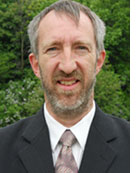 Martin Fairbank, Ph.D. Martin Fairbank has worked in the forest products industry for over 35 years, including many years for a pulp and paper producer and two years with Natural Resources Canada. With a Ph.D. in chemistry and experience in process improvement, product development, energy management and lean manufacturing, Martin currently works as an independent consultant, based in Montreal. He has also published Resolute Roots, a history of Resolute Forest Products and its predecessors over 200 years.
Martin Fairbank, Ph.D. Martin Fairbank has worked in the forest products industry for over 35 years, including many years for a pulp and paper producer and two years with Natural Resources Canada. With a Ph.D. in chemistry and experience in process improvement, product development, energy management and lean manufacturing, Martin currently works as an independent consultant, based in Montreal. He has also published Resolute Roots, a history of Resolute Forest Products and its predecessors over 200 years.
Martin Fairbank Consulting
Industry Experience
- Pulp and Paper Technology
- Biorefinery Development
- Government Subsidy Programs
Services
- Carbon Footprint Analysis
- Technical Writing
- Scientific Writing





